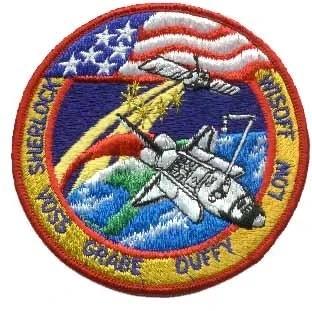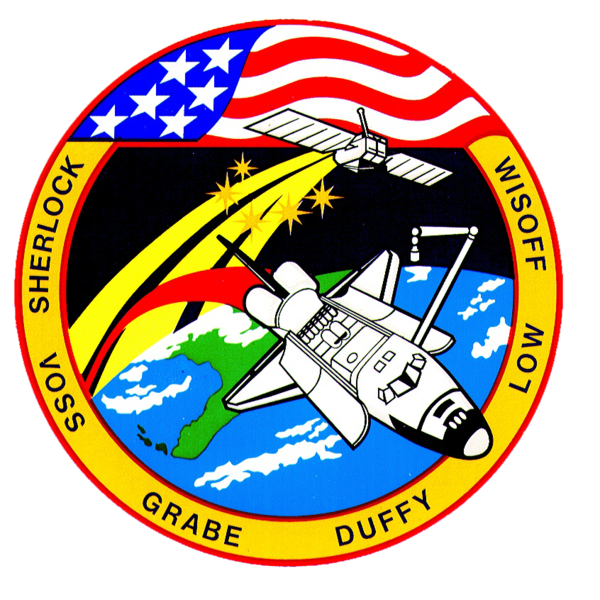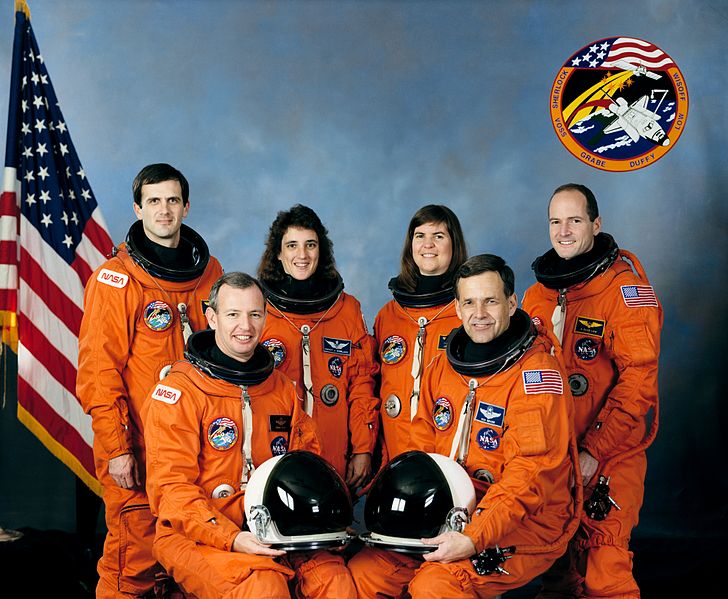Ronald J. Grabe
(Fourth Space Flight)
Brian Duffy
(Third Space Flight) Mission Specialist 1:
G. David Low
(First Space Flight) Mission Specialist 2:
Nancy J. Sherlock
(First Space Flight) Mission Specialist 3:
Peter J. Wisoff
(First Space Flight) Mission Specialist 4:
Janice E. Voss
(Second Space Flight)
STS-57 was a Shuttle-Spacehab mission of Space Shuttle Endeavour that launched 21 June 1993 from Kennedy Space Centre, Florida.
A free template by Lucknowwebs.com for WYSIWYG WebBuilder 8
Study
Research
Main Index
Space Cosmology
Science Research
*
About
Science Research
Science Theories
Desk
Site Map
BookShelf
Copyright © by Nigel G Wilcox · All Rights reserved · E-Mail: ngwilcox100@gmail.com
Designed by Nigel G Wilcox
Powered By AM3L1A
Pages within this section: USA Shuttle Mission Flights
STS-57
Pages within this section:
The Space Shuttle Missions
Astronauts:
STS-57
Command Pilot:
Pilot:
53
M
8
SM
Sub-Menu
menu
-
54
55
56
57
58
59
60
Endeavour's payload bay, with the SpaceHab module (foreground), EURECA (background), and astronauts Low and Wisoff performing an EVA (centre)
An improperly installed electrical connector on Endeavour's Remote Manipulator System (RMS) arm (installed 180 degrees off its correct position) prevented EURECA from recharging its batteries with orbiter power. A flight rule requiring antenna stowage was waived and EURECA was lowered into the payload bay without latching its antenna. Mission Specialists G. David Low and Peter Wisoff safely secured EURECA's dual antennas against the science satellite during the spacewalk. David Low was mounted on a foot restraint on the end of Endeavour's robotic arm while Mission Specialist Nancy J. Sherlock positioned the arm so Low could gently push the arms against EURECA's latch mechanisms. Payload controllers then drove the latches to secure each antenna. The five-hour, 50 minute spacewalk completed STS-57 mission's primary goal of retrieving the EURECA science satellite. Afterwards, Low and Wisoff completed maneuvers for an abbreviated extravehicular activity (EVA) Detailed Test Objective using the robot arm. Activities associated with each of the areas of investigation—mass handling, mass fine alignment and high torque—were completed with both EVA crewmen taking turns on the robot arm. Low and Wisoff wrapped up their spacewalk and returned to Endeavour's airlock shortly before 3 pm Central.
During the rest of the mission, the crew worked on experiments in the Spacehab module in the Shuttle's lower deck. These experiments included studying body posture, the spacecraft environment, crystal growth, metal alloys, wastewater recycling and the behavior of fluids. Among the experiments was an evaluation of maintenance equipment that may be used on Space Station Freedom. The diagnostic equipment portion of the Tools and Diagnostics System experiment was performed by Nancy Sherlock. Using electronics test instruments including an oscilloscope and electrical test meter, Sherlock conducted tests on a mock printed circuit board and communicated with ground controllers via computer messages on suggested repair procedures and their results.
In addition, Brian Duffy and Jeff Wisoff ran experiments in transferring fluids in weightlessness without creating bubbles in the fluid. The experiment, called the Fluid Acquisition and Resupply Experiment, or FARE, studied filters and processes that could improve methods of refueling spacecraft in orbit. By transferring water between two foot-diameter transparent tanks on Endeavour's middeck, engineers evaluated how the fluids behaved while the shuttle's steering jets fired for small maneuvers. Janice Voss worked on the Liquid Encapsulated Melt Zone, or LEMZ, experiment, which used a process called floating zone crystal growth. The low-gravity conditions of space flight permit large crystals to be grown in space.
Ron Grabe, Brian Duffy and Janice Voss participated in the Neutral Body Position study. Flight surgeons had noted on previous flights that the body's basic posture changes while in microgravity. This postural change, sometimes called the "zero-g crouch," is in addition to the one- to two-inch lengthening of the spine during space missions. To better document this phenomenon over the duration of a space mission, still and video photography of crew members in a relaxed position were taken early and late in the mission. Researchers will include these findings in the design specifications of future spacecraft to make work stations and living areas more efficient and comfortable for astronauts.

Data Courtesy Wikipedia.org















